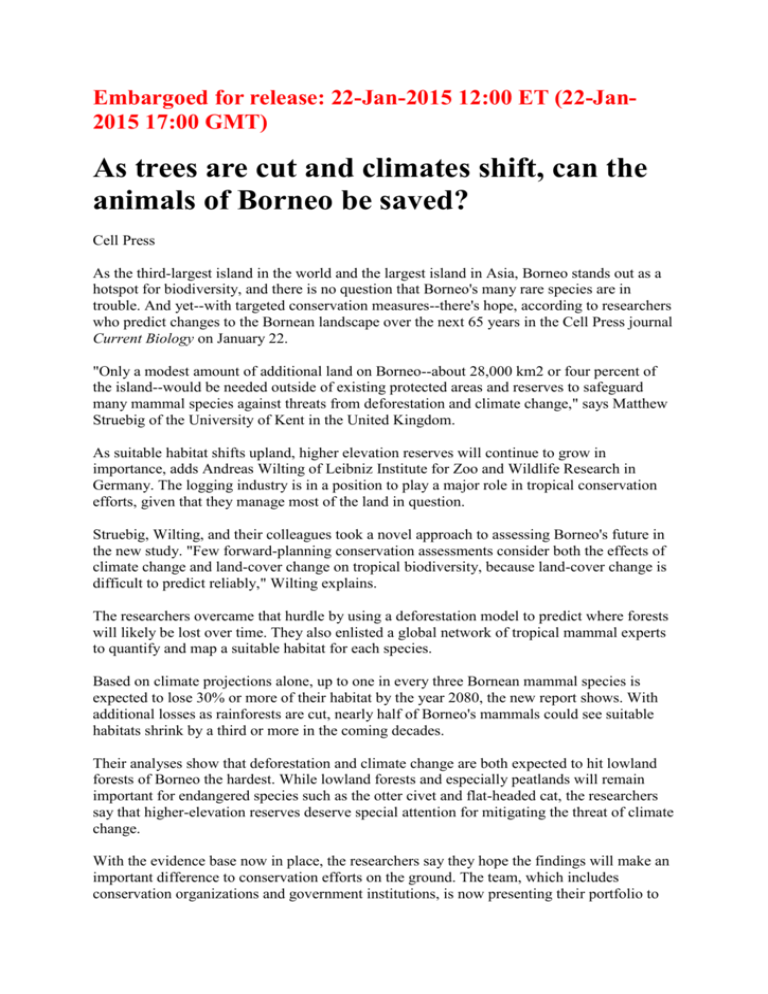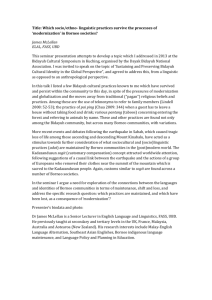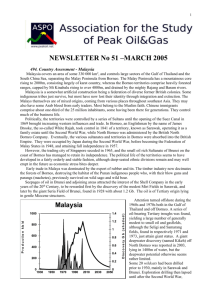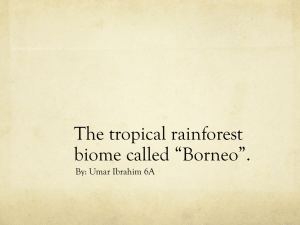Media Release
advertisement

Embargoed for release: 22-Jan-2015 12:00 ET (22-Jan2015 17:00 GMT) As trees are cut and climates shift, can the animals of Borneo be saved? Cell Press As the third-largest island in the world and the largest island in Asia, Borneo stands out as a hotspot for biodiversity, and there is no question that Borneo's many rare species are in trouble. And yet--with targeted conservation measures--there's hope, according to researchers who predict changes to the Bornean landscape over the next 65 years in the Cell Press journal Current Biology on January 22. "Only a modest amount of additional land on Borneo--about 28,000 km2 or four percent of the island--would be needed outside of existing protected areas and reserves to safeguard many mammal species against threats from deforestation and climate change," says Matthew Struebig of the University of Kent in the United Kingdom. As suitable habitat shifts upland, higher elevation reserves will continue to grow in importance, adds Andreas Wilting of Leibniz Institute for Zoo and Wildlife Research in Germany. The logging industry is in a position to play a major role in tropical conservation efforts, given that they manage most of the land in question. Struebig, Wilting, and their colleagues took a novel approach to assessing Borneo's future in the new study. "Few forward-planning conservation assessments consider both the effects of climate change and land-cover change on tropical biodiversity, because land-cover change is difficult to predict reliably," Wilting explains. The researchers overcame that hurdle by using a deforestation model to predict where forests will likely be lost over time. They also enlisted a global network of tropical mammal experts to quantify and map a suitable habitat for each species. Based on climate projections alone, up to one in every three Bornean mammal species is expected to lose 30% or more of their habitat by the year 2080, the new report shows. With additional losses as rainforests are cut, nearly half of Borneo's mammals could see suitable habitats shrink by a third or more in the coming decades. Their analyses show that deforestation and climate change are both expected to hit lowland forests of Borneo the hardest. While lowland forests and especially peatlands will remain important for endangered species such as the otter civet and flat-headed cat, the researchers say that higher-elevation reserves deserve special attention for mitigating the threat of climate change. With the evidence base now in place, the researchers say they hope the findings will make an important difference to conservation efforts on the ground. The team, which includes conservation organizations and government institutions, is now presenting their portfolio to government representatives in Indonesia, Malaysia, and Brunei through the Borneo Futures initiative. "It is these kinds of initiatives that are needed in under-resourced biodiversity hotspots to take scientific findings to key decision makers," Struebig says. ### Current Biology, Struebig et al.: "Targeted conservation to safeguard a biodiversity hotspot from climate and land-cover change" Current Biology, published by Cell Press, is a bimonthly journal that features papers across all areas of biology. Current Biology strives to foster communication across fields of biology, both by publishing important findings of general interest and through highly accessible front matter for non-specialists. For more information please visit http://www.cell.com/currentbiology. To receive media alerts for Current Biology or other Cell Press journals, contact press@cell.com. For news media only: To download a copy of this paper, please logon to http://www.eurekalert.org/jrnls/cell/pages/pdf/currentbiology/CURBIO11671_proof.pdf In online coverage, please mention the journal Current Biology and link to the paper at http://www.cell.com/current-biology/abstract/S0960-9822(14)01565-6 Author Contact Matthew Struebig, PhD Lecturer in Biological Conservation Durrell Institute of Conservation and Ecology, School of Anthropology and Conservation, University of Kent UKm.j.struebig@kent.ac.uk; +441227824924 Matt Struebig wilting@izw-berlin.de +49305168333 http://www.kent.ac.uk/sac/staff/struebig_matt.html Media Contact Gary Hughes MCIPR Head of Press Relations University of Kent Tel: + 44 (0) 1227 823100 G.M.Hughes@kent.ac.uk Images Image 1: The Greater Nectar Bat Caption This is the greater nectar bat Eonycteris major, a data-deficient species only found in Borneo and parts of the Philippines. Photographed in the forest of Murung Raya in Central Kalimantan, Indonesian Borneo. Credit Matthew Struebig, Durrell Institute of Conservation and Ecology, University of Kent Usage Restrictions Credit Required Image 2: The Endangered Flat-headed Cat Caption This is the endangered flat-headed cat Prionalurus planiceps, photographed in the sustainably managed and Forest Stewardship Council-certified Deramakot Forest Reserve in Sabah Malaysian Borneo. Credit Mohamed & Wilting, Sabah Forestry Department; Sabah Wildlife Department Usage Restrictions Credit Required Image 3: The Bornean Rainforests Caption This image shows the undisturbed hill rainforests of Ulu Temburong National Park, in Brunei, Borneo. Credit Matthew Struebig, Durrell Institute of Conservation and Ecology, University of Kent Usage Restrictions Credit Required











